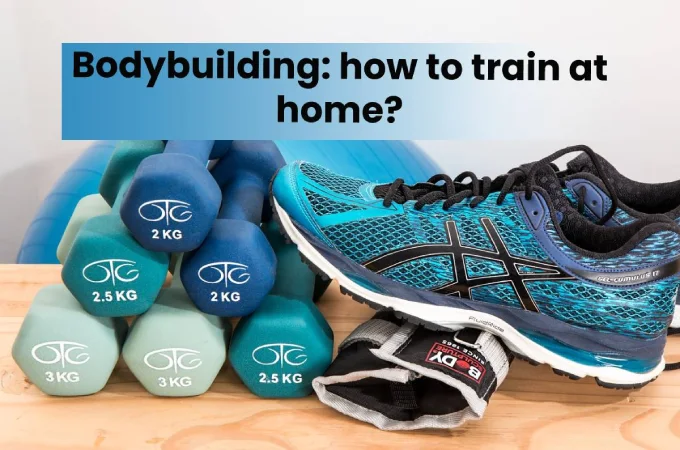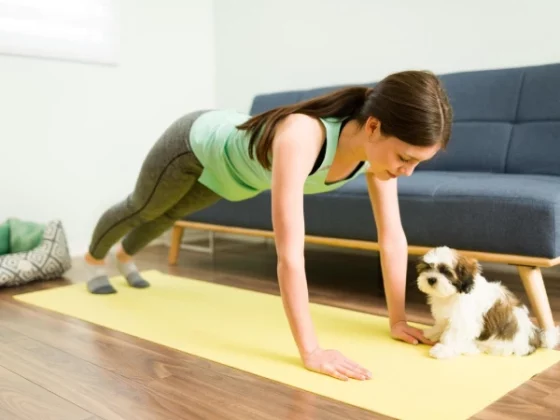Bodybuilding
If training in the weight room remains a classic for those who want to gain muscle volume or lose weight, some do not want to take a subscription for lack of time or resources. But did you know that it is quite possible to train at home and achieve satisfactory results? With only a little equipment and your body weight, there are several exercises you can do at home. You need to know the factors involved in muscle growth.
Also read: 5 Most Common Causes Of Gastrointestinal Diseases
Table of Contents
EQUIPMENT FOR HOME TRAINING
Classic strength exercises such as push-ups, pull-ups and dips are sufficient for the beginner. For the more advanced practitioner, gradual variations and increased loads will be necessary to continue to stimulate muscle growth.
However, the use of material, even rudimentary, will allow you to progress faster. You can fill your home workout space with the essentials – or more, depending on your budget – that will enable you to perform various fun and challenging exercises in your home workout.
Consider equipping yourself with:
- A yoga or gym mat
- A pull-up bar
- Resistance bands (elastic bands)
- A stability ball
If you have the cheap and space, you may want to consider investing in:
- Dumbbells: starting with three pairs, light, medium and heavy
- An adjustable bench
- VOLUME AND FREQUENCY
Whether you train in a weight room or at home, the volume and frequency of workouts – in addition to your diet – are the primary factors that contribute to muscle development. Although you need to be conservative during the first few weeks (during which your body adapts to the exercise), you will need to increase the level of intensity and the volume of training after that to continue to progress. Basically, the more you task your muscles, the more you stimulate their growth in a shorter period.
Training volume for Bodybuilding
According to a 2017 systematic review and a meta-analysis in the Journal of Sporting Science, volume is crucial for hypertrophy. In the 15 studies analysed, the scholars found that each additional set of exercise caused an increase in the size of the muscle fibres. This dose-response relationship means that the more groups you perform (as far as is reasonable to recover appropriately), the more muscle mass you will gain. Having your home gym will make this easier because your workouts will always be close at hand.
Frequency
As for regularity, a 2016 meta-analysis and systematic review in sports medicine found that training each primary muscle set twice a week remained found to be more effective for hypertrophy than just once a week. However, the researchers were unable to determine whether training muscle groups three times a week resulted in more significant increases. Based on these observations, consider working out each muscle group twice a week.
THE NUMBER OF REHEARSALS AND SERIES
There are several theories about how many sets and reps you should do to get the best results. When it comes to agents, the usual recommendation is 8 to 12 per set for hypertrophy, with higher agents being more effective for muscle endurance and lower reps more effective for strength.
When working at home, your progress will primarily depend on your available equipment. If you only train with your body weight, you will need to do more reps to exhaust your muscles.
The home training program for Bodybuilding
When you start, do about 10 to 12 sets per muscle group per week. When you begin to see results, add volume to your workouts by adding a few scenes. With this progression, you will be able to build muscle at home and improve your overall fitness.
In a 2019 study in sports and exercise medicine and science, participants who performed five sets of exercise per muscle group experienced significantly more significant muscle growth than participants who completed one or three sets. In total, the group with the most gains achieved 30 upper body sets and 45 lower body sets (per week).
Recovery times
For hypertrophy, the rest periods between sets are usually between 60 and 180 seconds. However, in an eight-week study published in the Journal of Strength and Conditioning Research in 2016, participants who rested three minutes between sets gained more mass than participants who slept one minute, even when all other program variables remained the same.
THE BEST EXERCISES for Bodybuilding
Now, the confusing part: What exercises should you do to build muscle at home? The activities you choose can be polyarticular, like pull-ups or push-ups, or analytical like bicep curls. Which is best for hypertrophy?
It remains hotly debated in the fitness arena, but research shows that both are equally effective. In a 2015 study in the Asian Journal of Sports Medicine, 29 male participants trained their biceps using either push-ups, a compound exercise, or dumbbell bicep curls, an isolation exercise.
After ten weeks, there was no difference in general muscle growth between polyarticular movement and isolation movement. The researchers, therefore, concluded that exercise selection should remain based on individual preference, body type and available equipment.
Polyarticular bodyweight exercises – Bodybuilding
- While it is challenging to have as much variety at home as in the weight room, you can include some efficient exercises in your routine, such as polyarticular bodyweight exercises, which activate multiple joints. And therefore, several muscles at the same time. Here are the main exercises for bodyweight training:
- Pronation and supination pull-ups
- Bodyweight and pistol squat squats (one foot squat)
- Pumps and their variations
- The dips
If you have bars or dumbbells at home, you can perform heavy squats, deadlifts, military presses, and other types of classic exercises that build muscle mass. The key is to gradually load your muscles, encouraging faster muscle building in a shorter amount of time.
We hope these tips help you build great workouts at home. Coming soon on Wikify, our complete home training programs!
Also read: The 7 Great Health Benefits of Running


